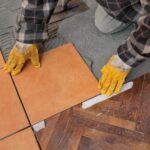A strong and reliable home wifi range is essential in today’s connected world. From streaming movies and online gaming to working from home, a stable and wide-ranging wifi network is crucial for seamless connectivity. However, many homeowners often struggle with weak wifi signals that lead to frustrating disruptions and limited coverage. In this article, we will explore the significance of a strong home wifi range and discuss various strategies to improve it.
Having a weak wifi signal at home can be a major inconvenience. Slow download speeds, lagging video calls, or constant buffering can make even simple tasks feel like a daunting challenge. Moreover, dead zones within your home where the signal doesn’t reach can be highly frustrating, especially if they are in areas where you spend the most time.
To overcome these challenges, it is crucial to assess your current wifi connection strength. By understanding where the limitations lie, you can take targeted measures to improve your home wifi range. We will provide guidelines on how to gauge the strength and reliability of your wifi network, along with tools and techniques to identify potential obstacles or interferences.
In the following sections of this article, we will delve deeper into strategies for optimizing the placement of your wifi router, upgrading your router or modem for better performance, utilizing antennas and repeaters to extend signal range, and exploring options like range extenders or mesh wifi systems for larger homes or multi-story buildings. We will also share DIY solutions and signal boosting techniques while highlighting the importance of security and bandwidth management.
By implementing these recommendations, you can achieve a stronger and more reliable home wifi range that supports all your internet needs without frustration or interruptions. Let’s dive into each section in detail to understand how these solutions can transform your internet experience at home.
Assessing Your Current Wifi Connection Strength
When it comes to improving your home wifi range, the first step is to assess the current strength of your wifi connection. This will help you understand the limitations and identify areas for improvement. There are several ways to gauge the strength and reliability of your home wifi network.
One simple way to assess your wifi connection strength is by checking the signal bars on your devices. Most devices, such as smartphones or laptops, have a built-in signal indicator that shows the strength of the wifi signal they are connected to. Keep in mind that these indicators may vary between different devices, so it’s essential to understand the range and meaning behind them.
Another method is using wifi analyzer apps or software tools available for smartphones or computers. These tools provide detailed information about your wifi network, such as signal strength, channel usage, and interference from neighboring networks. They can help you identify any areas with weak signal coverage or potential sources of interference.
Additionally, you can also perform a speed test using online tools designed specifically for measuring internet speeds. This will give you an indication of how fast your internet connection is and if there are any inconsistencies in speed throughout different areas of your home.
By assessing your current wifi connection strength, you will have a better understanding of its limitations and be able to make informed decisions on how to improve it. Whether it’s through optimizing router placement or upgrading your equipment, knowing where you stand will guide you towards achieving a stronger and more reliable home wifi range.
| Method | Description |
|---|---|
| Checking Signal Bars | A simple way to gauge wifi connection strength using built-in device indicators. |
| Wifi Analyzer Apps/Software Tools | Tools that provide detailed information about wifi networks, including signal strength and interference. |
| Speed Test | Online tools to measure internet speeds and identify inconsistencies in different areas of your home. |
Identifying Potential Obstacles and Interferences
When it comes to improving your home wifi range, it is essential to identify potential obstacles and interferences that may be affecting the signal strength. Common obstacles such as walls, appliances, or neighboring networks can significantly diminish the wifi signal and lead to frustratingly slow internet speeds. Identifying and minimizing these obstacles will help ensure a more reliable and stable wifi connection throughout your home.
One of the first steps in identifying obstacles is to assess the layout of your home. Take note of any walls, floors, or ceilings that may be blocking the wifi signal. Thick walls made of materials like concrete or brick can greatly reduce signal strength. Additionally, metal objects or appliances like refrigerators or microwaves can also interfere with the signal.
To further investigate potential obstacles, you can consider using tools such as a wifi analyzer app or software. These tools can provide valuable information about nearby networks and their respective signal strengths. By analyzing this data, you can identify channels that are less congested and choose the optimal channel for your network. This will help minimize interference from neighboring networks and boost your own wifi signal.
Another approach to minimizing obstacles is through proper router placement. One of the key factors in achieving maximum coverage is positioning your wifi router strategically. Placing the router in a central location within your home will help evenly distribute the signal throughout different areas. You should also avoid positioning it near large objects or in enclosed spaces since they can block or weaken the signal.
| Obstacles | Interference Sources |
|---|---|
| Thick walls | Metal objects |
| Concrete or brick walls | Appliances like refrigerators or microwaves |
Optimizing the Placement of Your Wifi Router
Importance of Strategic Placement
One of the most crucial factors in improving your home wifi range is the strategic placement of your wifi router. The location of your router plays a significant role in determining the strength and coverage of your wifi signal. By optimizing its placement, you can ensure that the signal reaches all corners of your home, minimizing dead zones and ensuring a stable connection throughout.
Ideal Locations for Wifi Router Placement
To achieve optimal coverage, it is recommended to place your wifi router at a central location in your home. This allows for equal distribution of the signal across various rooms and levels. Avoid placing the router near walls or obstructions that can block or weaken the signal, such as thick furniture, metal objects, or appliances like microwaves and refrigerators.
Elevating your router can also help improve its range. Placing it on a higher shelf or mounting it on a wall can reduce interference from objects on ground level and provide better coverage upstairs or in multi-story buildings.
Techniques for Maximizing Coverage
In addition to strategic placement, there are some techniques you can employ to further maximize the coverage provided by your wifi router:
- Adjusting Antenna Position: Most routers come with adjustable antennas that allow you to tweak their orientation. Experiment with different positions to find the one that provides you with the best signal strength. For example, positioning them perpendicular to each other or angling them at 45 degrees may help improve coverage.
- Using Signal Boosters: Signal boosters, also known as wireless amplifiers or range extenders, are devices that capture and amplify the existing wifi signal from your router, extending its range further into areas where it may be weak. These devices are easy to install and can significantly enhance coverage without having to move your router.
- Employing Mesh Wifi Systems: If you have a large home or a multi-story building, consider investing in a mesh wifi system. Mesh systems use multiple devices placed strategically throughout your home to create a unified network that provides seamless coverage in every room. These systems are designed to eliminate dead zones and can deliver high-performance wifi in even the most challenging environments.
By optimizing the placement of your wifi router and employing techniques to maximize coverage, you can significantly improve your home wifi range. Experiment with different positioning options and consider investing in additional devices or systems if needed, ensuring a reliable and strong signal throughout your home.
Upgrading Your Router or Modem
Benefits of Upgrading Your Router or Modem
Upgrading your router or modem is a significant step towards improving your home wifi range. Older routers or modems may not have the latest technology and features that can enhance signal strength, coverage, and overall performance. By investing in a new router or modem, you can experience several benefits:
- Improved Range: Newer routers and modems are designed to provide better coverage and range compared to older models. They often have higher quality antennas that can transmit and receive signals more effectively, resulting in a stronger wifi signal throughout your home.
- Advanced Technology: Upgraded routers and modems come equipped with the latest wireless protocols (such as 802.11ac or Wi-Fi 6) that offer faster speeds and better stability. These technologies enable multiple devices to connect simultaneously without compromising performance, even in crowded network environments.
- Enhanced Security: Older routers or modems might lack up-to-date security features, leaving your home network vulnerable to potential threats. With an upgraded device, you can benefit from improved security measures like advanced encryption standards and built-in firewalls, ensuring a safer online experience for all connected devices.
- Additional Features: Many newer routers include additional features such as guest networks, parental controls, and Quality of Service (QoS) settings that allow you to prioritize certain activities on your network (like streaming video or gaming). These features provide greater flexibility in managing your internet connection.
Selecting the Right Router or Modem
When upgrading your router or modem for better wifi range, it’s essential to choose the right device for your specific needs. Consider the following factors before making a purchase:
- Wifi Standard: Look for routers that support the latest wifi standards (e.g., 802.11ac) for optimal performance and compatibility with current devices.
- Speeds: Check the maximum speeds supported by the router or modem. Higher speeds are beneficial for activities like streaming high-definition content or online gaming.
- Coverage: Consider the size of your home and select a router or modem with sufficient coverage to reach all areas. Some routers also offer mesh networking capabilities, which utilize multiple access points to extend coverage even further.
- Number of Devices: If you have many devices connected simultaneously, consider a router with advanced features like MU-MIMO (Multi-User Multiple Input Multiple Output) that can handle multiple connections efficiently.
- Budget: Set a budget for your upgrade and compare different models within that range. While more expensive routers tend to offer better performance, there are affordable options available that still deliver improved wifi range.
By selecting the right router or modem according to your specific requirements, you can significantly enhance your home wifi range and enjoy a stronger and more reliable internet connection throughout your entire living space.
Enhancing Wifi Signal Strength with Antennas and Repeaters
When it comes to improving your home wifi range, using external antennas and repeaters can be effective solutions. These devices are designed to extend the reach of your wifi signal, ensuring that it reaches every corner of your home.
One option for enhancing your wifi signal strength is to utilize external antennas. These antennas can be attached to your router or access point to boost the range and coverage of your wifi network. By placing them strategically, you can direct the signal in specific directions or towards certain areas where the signal may be weak. This is especially useful if you have a large home or if there are obstacles obstructing the wifi signal, such as walls or furniture.
Another option is using wifi repeaters or extenders. These devices work by receiving the existing wifi signal from your router and rebroadcasting it, effectively extending the range of your network. You can place these repeaters at strategic locations within your home where the wifi signal strength starts to weaken. They will then amplify and retransmit the signal, helping to eliminate dead spots and ensure consistent coverage throughout your home.
It’s worth mentioning that while antennas and repeaters can improve wifi signal strength, they do come with some limitations. The speed and performance of the extended network may not match those of the original router, so keep this in mind when considering these options.
Utilizing Wifi Range Extenders or Mesh Wifi Systems
Wireless range extenders and mesh wifi systems are powerful tools that can expand the coverage of your home wifi network, especially in large homes or multi-story buildings. These devices work by receiving the existing wifi signal and then amplifying it to reach areas where the signal is weak or non-existent.
One option for extending your wifi range is to use a range extender. A range extender, also known as a wifi repeater or booster, picks up the existing wifi signal from your router and rebroadcasts it, effectively extending the coverage area. When selecting a range extender, consider factors such as compatibility with your current router, speed capabilities, and ease of setup.
Another option is to opt for a mesh wifi system. Mesh systems consist of multiple devices called nodes that work together to create a seamless wireless network with unified coverage throughout your home. Each node communicates with one another to ensure that your devices connect to the node with the strongest signal, providing a more reliable and consistent connection.
When choosing a mesh system, consider factors such as the number of nodes required for your home’s size and layout, compatibility with your current internet service provider, and additional features like parental controls or advanced security options.
Here are some advantages of using range extenders or mesh wifi systems:
- Expanded Coverage: Range extenders and mesh systems can reach areas of your home that were previously out of range or experiencing weak signals.
- Seamless Connectivity: Mesh systems provide a single network name (SSID), allowing you to move around your home without manually connecting to different networks.
- Increased Stability: By amplifying the existing signal or creating a unified network, both range extenders and mesh systems help minimize drops in connection and provide more stable performance overall.
Overall, whether you choose a range extender or opt for a mesh wifi system largely depends on the size and layout of your home as well as your specific needs. By implementing these solutions, you can significantly improve the wifi range and connectivity in your home, ensuring a more enjoyable and efficient online experience.
Employing Signal Boosting Techniques and DIY Solutions
When faced with a weak wifi signal, there are several signal boosting techniques and DIY solutions that you can employ to improve your home wifi range. These methods can help enhance the strength and stability of your network without the need for additional hardware.
One effective way to boost your wifi signal is by repositioning your router. By strategically placing your router in a central location, away from obstructions such as walls or appliances, you can optimize its range and coverage. It is recommended to place the router on a higher shelf or mount it on a wall for better signal propagation. Additionally, angling the antennas on your router towards the areas where you require better coverage can also help improve signal strength.
Another simple DIY solution is to build reflectors for your router using everyday household items like aluminum foil. By creating a curved surface using the foil and placing it behind the antennas, you can focus and direct the wifi signals towards specific areas of your home. This method can help enhance signal directionality and increase coverage in specific zones where you need stronger connectivity.
In addition to these DIY solutions, there are also software-based techniques that can help optimize your wifi signal strength. One such technique is changing the wireless channel on your router settings. If you live in an area with multiple wifi networks operating on the same channel, it can cause interference and weaken your signal. Changing to a less congested channel can significantly improve performance.
By employing these signal boosting techniques and DIY solutions, you can make noticeable improvements in the strength and reliability of your home wifi range without investing in additional hardware or professional assistance. Experimenting with these methods will allow you to find an effective solution tailored to meet your specific needs while enjoying a seamless internet experience throughout your home.
Maximizing Security and Managing Bandwidth
In addition to improving the range and strength of your home wifi network, it is essential to prioritize security and manage bandwidth effectively. This section will discuss ways to enhance wifi security without compromising signal strength and efficient bandwidth management practices for optimal performance.
When it comes to wifi security, there are several measures you can take to protect your network from unauthorized access. The first step is to change the default username and password on your router. Using a strong, unique password is crucial to prevent potential hackers from gaining access to your network. Additionally, enabling network encryption, such as WPA2 or WPA3, ensures that all data transmitted over your wifi network is encrypted and secure.
Another effective security measure is disabling remote management capabilities on your router. With remote management disabled, only devices connected directly to your home network can access and modify router settings. This reduces the risk of malicious individuals remotely accessing and compromising your router’s configuration.
Bandwidth management is equally important for maintaining a reliable home wifi connection. By prioritizing critical applications or devices in your household, you can ensure that they receive sufficient bandwidth for optimal performance. Most modern routers offer Quality of Service (QoS) settings that allow you to assign priority levels to different applications or devices based on their importance or usage requirements.
Another useful technique is setting up guest networks. If you frequently have visitors who need internet access but do not want them using up too much bandwidth on your primary network, creating a separate guest network allows you to control their connectivity while ensuring the security of your main network remains intact.
Furthermore, regularly monitoring and managing the devices connected to your wifi network can help identify any unusual activity that may be hogging bandwidth or posing a security risk. Some routers provide built-in tools that allow you to view a list of connected devices, check their data usage, and even block certain devices if necessary.
By implementing these security measures and managing bandwidth effectively, you can enjoy a secure and optimal wifi experience in your home. Remember to regularly update your router’s firmware to stay protected against any known vulnerabilities and follow best practices for wifi security. With these measures in place, you can achieve a strong and reliable home wifi range.
Conclusion
In conclusion, achieving a stronger and more reliable home wifi range is essential for a smooth online experience. A stable and wide-ranging wifi network can alleviate the frustrations of weak signal strength and provide seamless connectivity throughout your home. By assessing your current connection strength, identifying potential obstacles, optimizing your router placement, and considering upgrades or additional hardware such as antennas or repeaters, you can significantly improve your wifi range.
It is crucial to first gauge the strength and reliability of your current wifi network before implementing any solutions. This will help you understand the existing limitations and identify areas for improvement. Use tools and techniques recommended in this article to measure signal strength and reliability.
Identifying potential obstacles and interferences is another important step in improving your home wifi range. Walls, appliances, and neighboring networks can significantly diminish the signal strength. By locating these barriers and minimizing their impact through practical solutions such as repositioning furniture or adjusting router settings, you can enhance your overall coverage.
Optimizing the placement of your wifi router is key to maximizing coverage. Understanding how signal propagates through different materials will allow you to strategically position your router for optimal performance. Consult the suggestions provided in this article to find ideal locations within your space.
Consider upgrading your router or modem if it’s outdated or unable to meet the demands of modern devices. Newer models with improved range and performance can greatly enhance your home wifi coverage. Take into account factors such as wireless standards, antenna configurations, and compatibility with other devices when selecting a new router or modem.
Utilizing external antennas to extend wifi range or deploying repeaters/extendors are effective ways to amplify the signal coverage in larger homes or multi-story buildings. These options serve as practical solutions for those seeking wider coverage without compromising on performance.
Range extenders or mesh wifi systems are ideal for large homes or multi-story buildings where there are significant dead zones or areas with poor connectivity. Evaluate various options available in the market considering their unique capabilities to find the best solution for your specific needs.
In addition to hardware solutions, there are also signal boosting techniques and DIY solutions that can enhance wifi range without additional expenses. Experimenting with reflectors or using aluminum foil can improve signal directionality, while optimizing security measures and managing bandwidth can ensure optimal performance throughout your home network.
Frequently Asked Questions
Why is my Wi-Fi not reaching the whole house?
There could be several reasons why your Wi-Fi is not reaching the whole house. One possibility is that your router might be located in a corner or on one end of the house, leading to poor signal distribution across the entire space. Additionally, thick walls, floors, and other physical obstructions can weaken the Wi-Fi signal and limit its range.
Another reason could be interference from other electronic devices or neighboring Wi-Fi networks utilizing the same frequency bands. Lastly, outdated or poorly configured equipment might hinder the signal strength and coverage. To address these issues, it is advisable to consider relocating the router to a more central location within your house, purchasing a higher-quality router with better range capabilities, ensuring that your network uses less congested Wi-Fi channels, and potentially investing in additional networking equipment like range extenders.
How to get Wi-Fi 200 feet away?
Extending a Wi-Fi signal over 200 feet can pose some challenges due to the limited range of standard routers. However, there are a few approaches you can try to achieve this extended coverage. Firstly, investing in a long-range router that offers stronger signals might help bridge that distance effectively.
Alternatively, you can opt for setting up a mesh Wi-Fi network using multiple access points strategically placed throughout the area you want to cover. This method allows for seamless transition between different access points and improves coverage across larger spaces compared to using just one router alone. Another solution could involve using powerline adapters with built-in Wi-Fi capability that utilizes your home’s electrical wiring as an extended pathway for connectivity.
Are WiFi extenders worth it?
WiFi extenders can be worth it depending on your specific situation and requirements. These devices are designed to amplify and rebroadcast an existing Wi-Fi signal in areas where it may be weak or non-existent due to distance or physical obstacles. If you have certain dead zones in your home where the Wi-Fi signal drops significantly or becomes unreliable, then investing in a good quality extender can fill those gaps and enhance overall coverage.
However, it is essential to choose the right extender model that matches your router’s specifications and supports the desired range extension. Additionally, keep in mind that using extenders can introduce some signal degradation due to the rebroadcasting process. Consequently, for optimal performance, it is recommended to position the extender in an area with a good existing Wi-Fi signal to achieve reliable coverage extension without sacrificing too much speed.

I’m thrilled to have you here as a part of the Remodeling Top community. This is where my journey as an architect and remodeling enthusiast intersects with your passion for transforming houses into dream homes.





